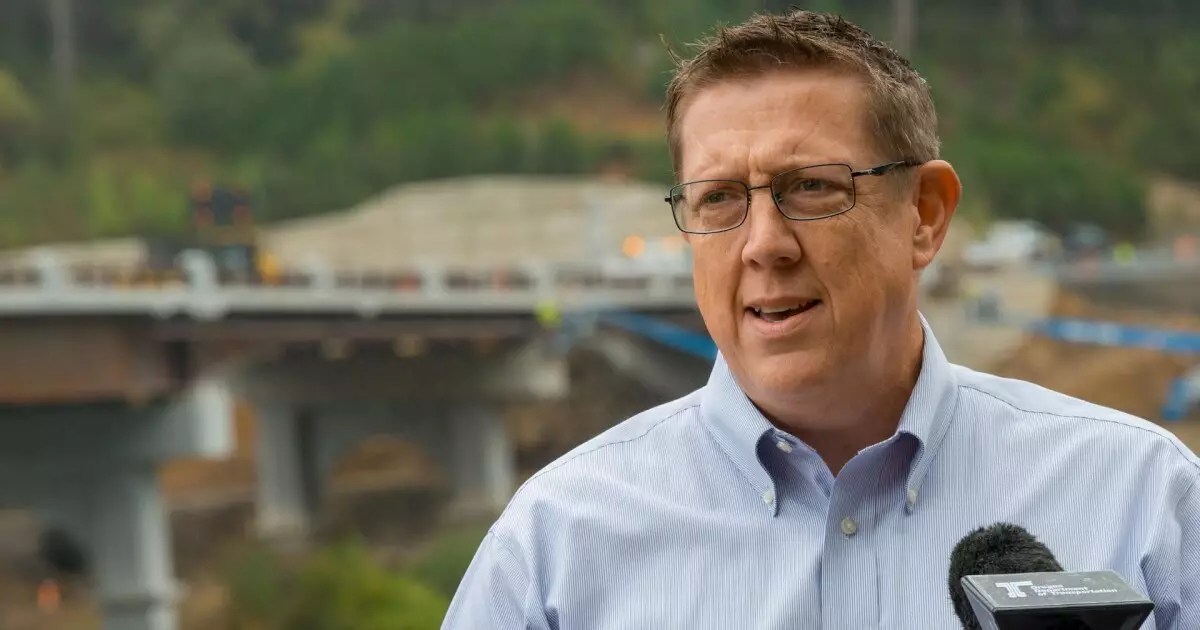Oregon finds itself teetering on the edge of a transportation disaster that underscores systemic neglect and political failure. As lawmakers exit their session without passing a critical transportation funding package, the Oregon Department of Transportation (ODOT) is preparing for a brutal round of layoffs, potentially stripping hundreds of skilled workers from service. This isn’t merely an administrative hiccup; it’s a profound indictment of a government too paralysed by partisan bickering to address urgent infrastructure needs. The scenic highways, vital bridges, and crucial maintenance operations face imminent jeopardy—not just as a matter of fiscal policy, but as a fundamental threat to community safety and economic stability.
The reality becomes even starker when considering that this crisis was avoidable. For years, ODOT repeatedly warned of a looming funding cliff, driven by stagnant gas taxes, inflation, and statutory constraints. Yet, political infighting and procedural hurdles prevented a decisive solution. The absence of a transportation package, especially one carrying a hefty $14.6 billion price tag over a decade, showcases a legislature more committed to ideological impasses than pragmatic governance. It’s a reflection of a system unable—or unwilling—to prioritize the essential services that keep Oregon moving. When your government fails at this level, the repercussions resonate across communities, workers, and the economy alike.
The Human Cost and Political Apathy
At the heart of this crisis are the thousands of ODOT employees—dedicated professionals who keep Oregon’s roads safe and reliable. Facing layoffs, many are being told they’ll lose their jobs without even the promise of reemployment or transitional support beyond July. This is not just about bureaucratic red tape; it’s about livelihoods, families, and the stability of communities that depend on well-maintained infrastructure. The emotional toll cannot be overstated—these are workers who have spent their careers keeping Oregon’s highways functional, now suddenly being cast aside due to political deadlock.
What compounds the tragedy is the political spectacle surrounding the failure to pass the needed funding. Despite the obvious necessity, lawmakers were unable to muster the supermajority required for the proposed tax and fee increases. The massive $14.6 billion package, which might have prevented the layoffs, becomes a political football in a state that still struggles with the optics of taxation and government intervention. Meanwhile, the governor alluded to the possibility of a special session but offered no concrete assurance, merely adding to a climate of uncertainty and disillusionment among workers and citizens alike.
The inaction exposes a deeper malaise: a government that can’t find consensus on essential investments. It reveals shortcomings in representation, low prioritization of infrastructure, and an obsession with political symbolism over practical outcomes. The resulting crisis is not just an economic setback but a stark warning against the perils of prolonged political dysfunction.
Structural Flaws and the Future of Oregon’s Infrastructure
Oregon’s transportation system, once robust, now faces a perfect storm of structural deficiencies. Reliance on declining gas taxes, which no longer sustain infrastructure demands, coupled with legal restrictions on funding flexibility, leaves ODOT in a precarious position. The agency’s warnings of financial sustainability have gone unheeded for years—all ignored amid political gridlock. As a consequence, the essential maintenance and operational capacities are at grave risk.
The fact that federal funds cannot cover maintenance, and state law restricts the use of project or transit funds for operational costs, makes the problem even more intractable. The result is a chronic underfunding that forces ODOT into a corner. Cutting costs by reducing staffing and delaying maintenance isn’t just fiscally prudent—it’s a high-stakes gamble with the safety and functionality of Oregon’s entire transportation network.
Looking ahead, unless decisive action is taken, the state’s infrastructure will become increasingly fragile. The current crisis serves as an alarming bellwether: failing to address the systemic revenue issues now will inevitably lead to more significant failures down the road. The political will to undertake comprehensive reforms and funding solutions must be awakened; otherwise, Oregon risks a catastrophic decline in transportation reliability that could further impair economic growth and community safety.
A Call for Pragmatic Leadership in the Face of Chaos
This crisis should serve as a wake-up call for Oregon’s policymakers. The failure to pass a comprehensive transportation package isn’t a symptom of mere political disagreement; it’s a failure of leadership and vision. For too long, ideological battles have paralyzed pragmatic solutions. The result is a government that lets its essential services languish, harming the very constituents it vows to serve.
It’s time for leaders to put aside petty partisan disputes and recognize that infrastructure isn’t a playground for political posturing. Reliable transportation is a cornerstone of economic vitality, safety, and societal well-being. The urgency of the current situation demands bold, bipartisan action. Otherwise, Oregon’s roads will become increasingly dangerous, its workers more precarious, and its future more uncertain.
The reality is clear: in order to rebuild Oregon’s transportation future, a pragmatic and centrist approach committed to sustainable funding and maintenance must take precedence. The failure of lawmakers to do so is not just an administrative oversight; it’s a profound betrayal of the state’s economic and social fabric. If Oregon’s leadership cannot rise to the challenge now, the road ahead will only grow darker.


Leave a Reply